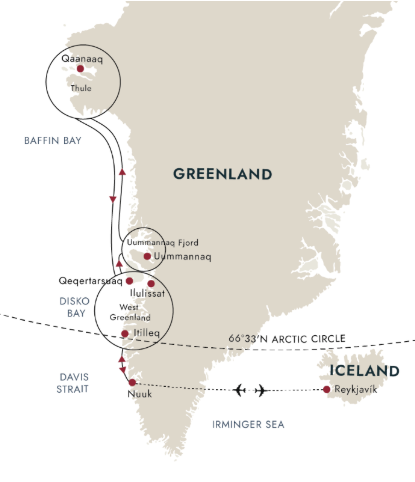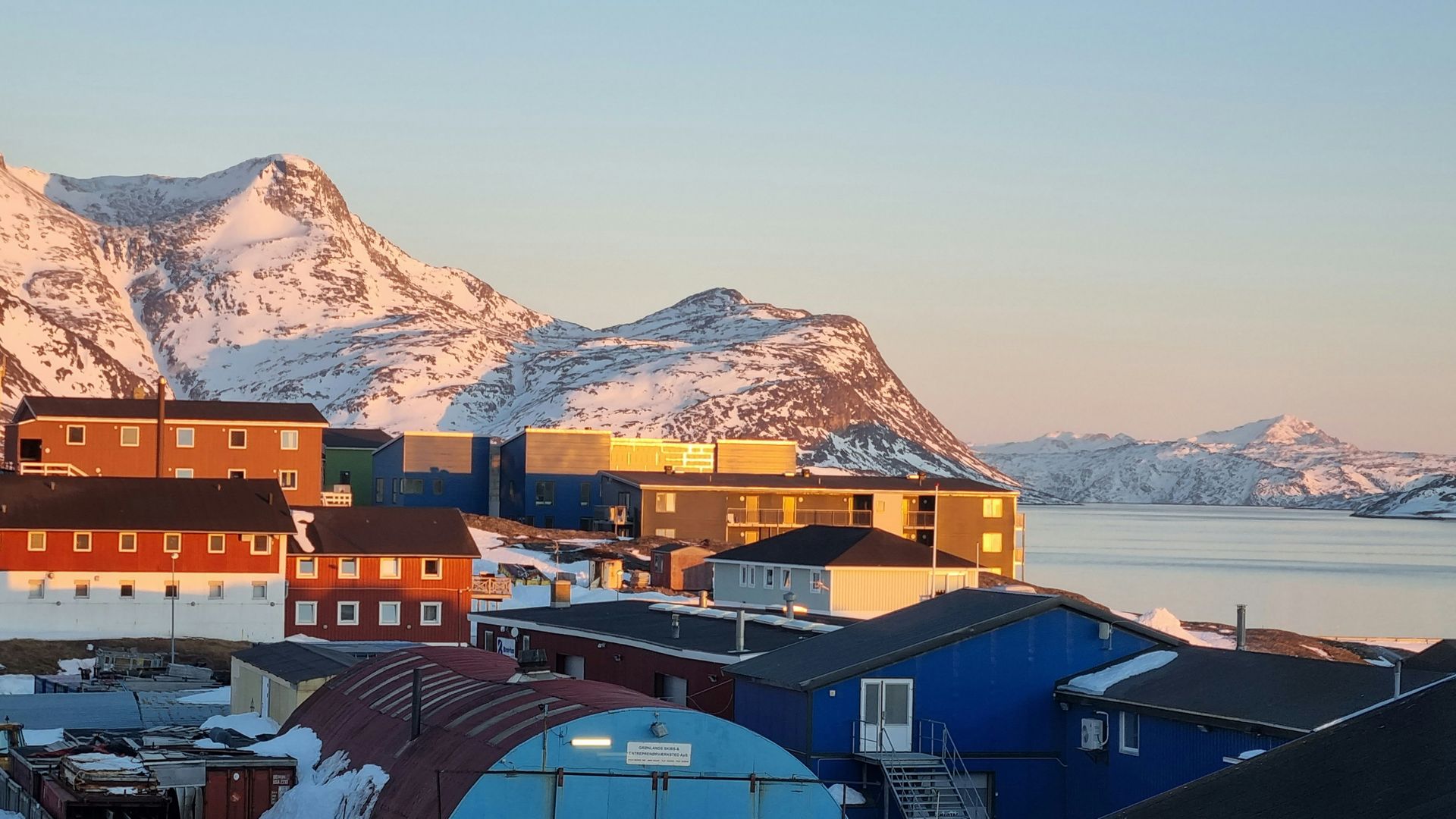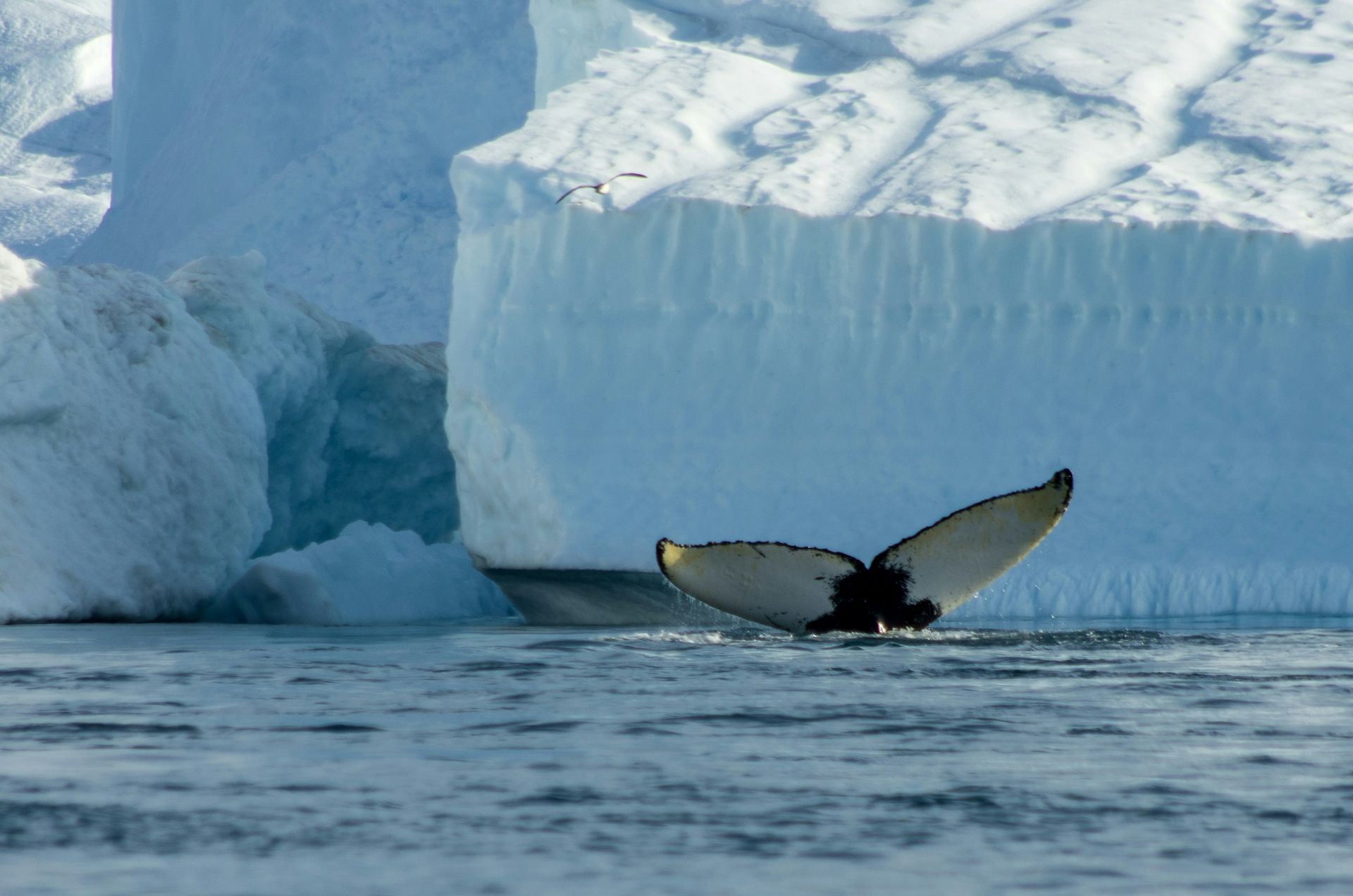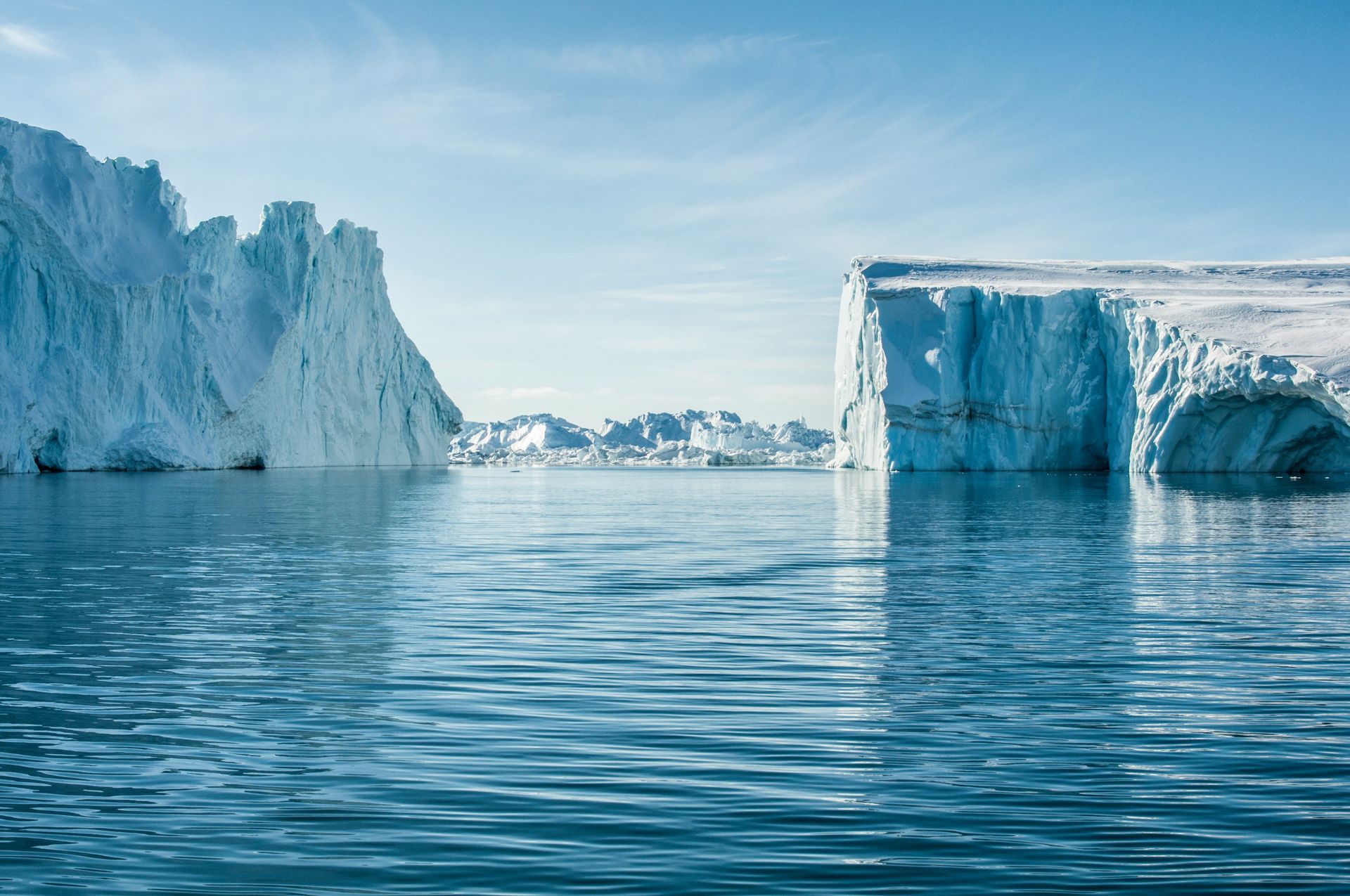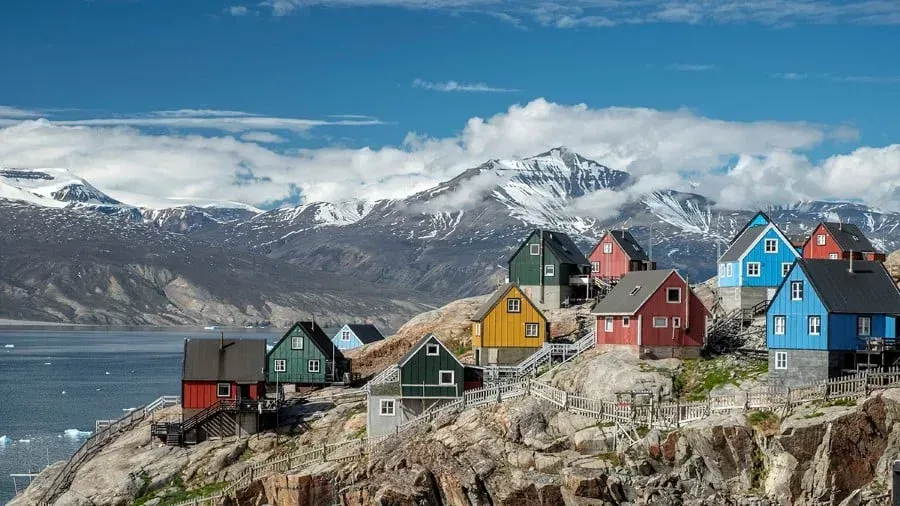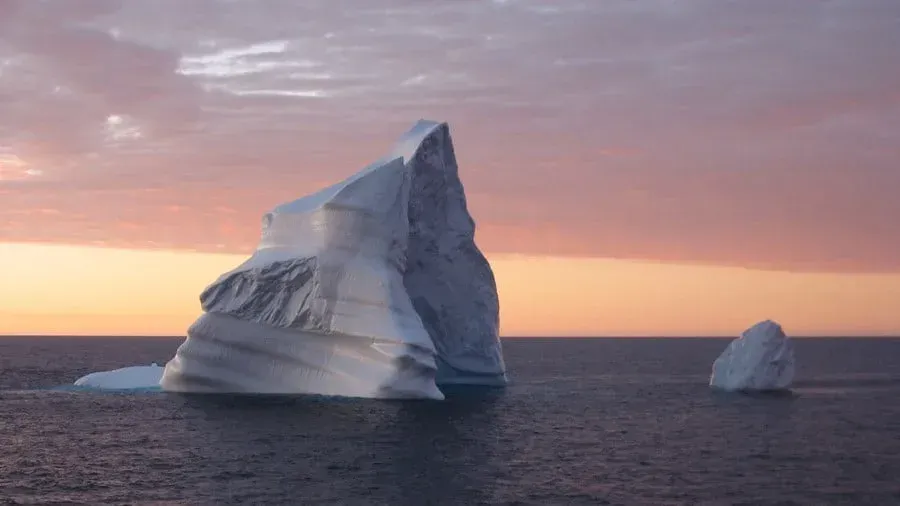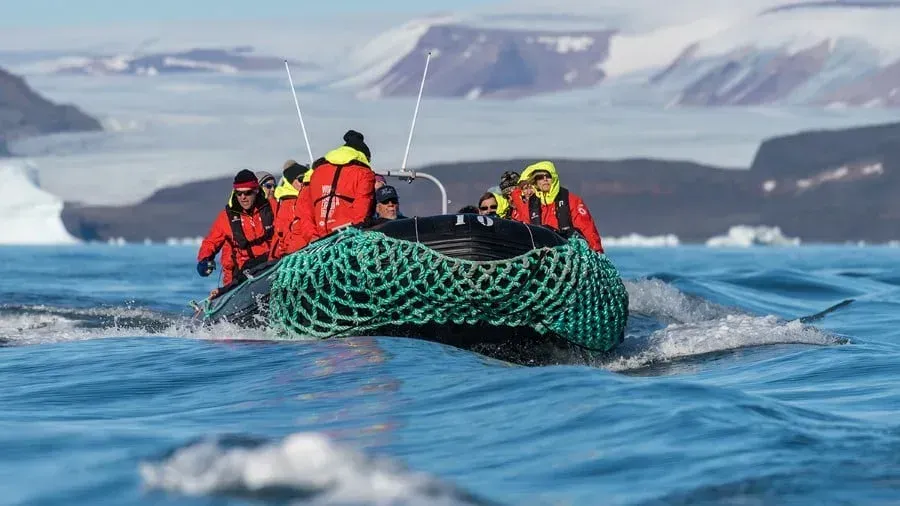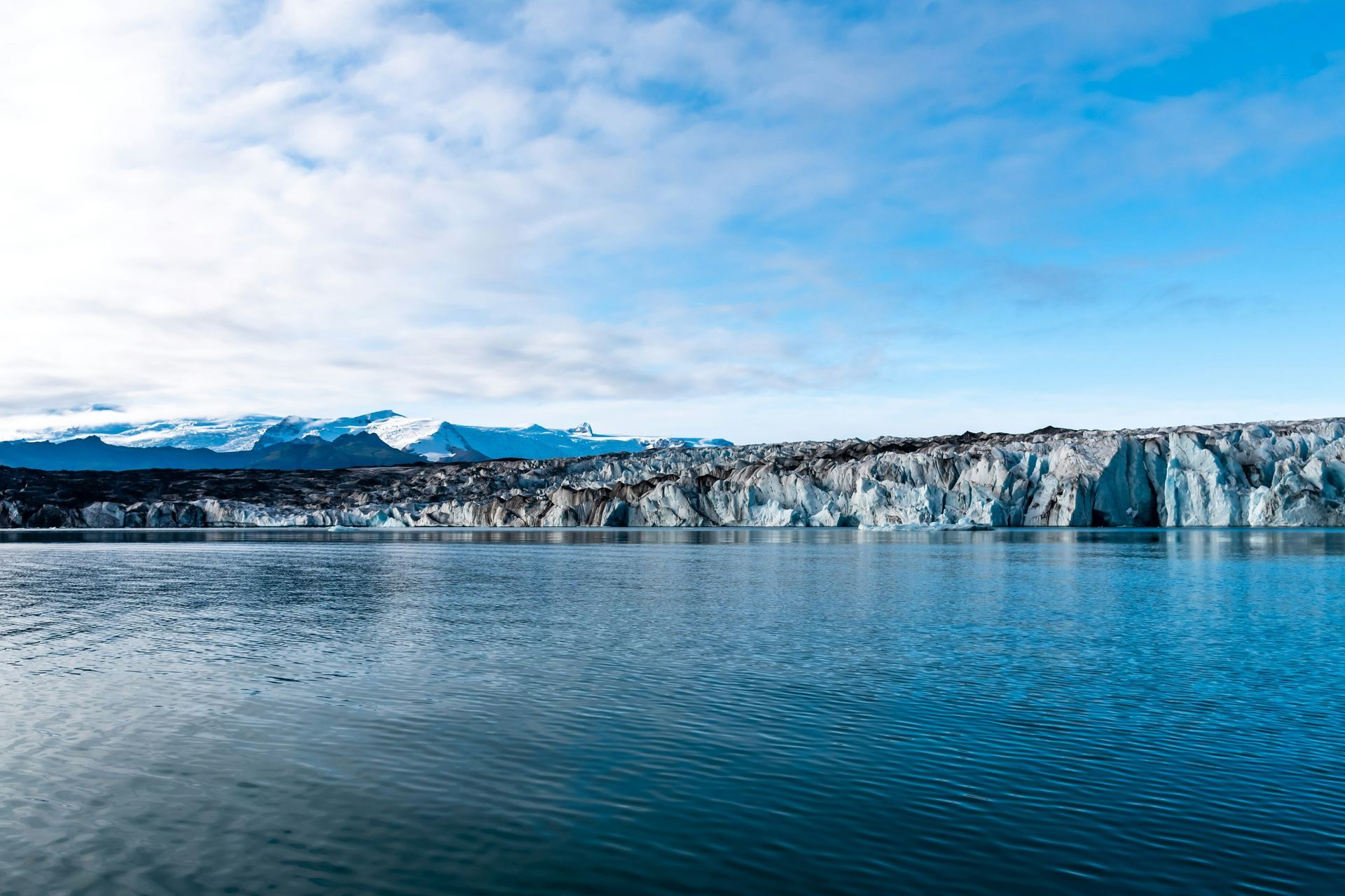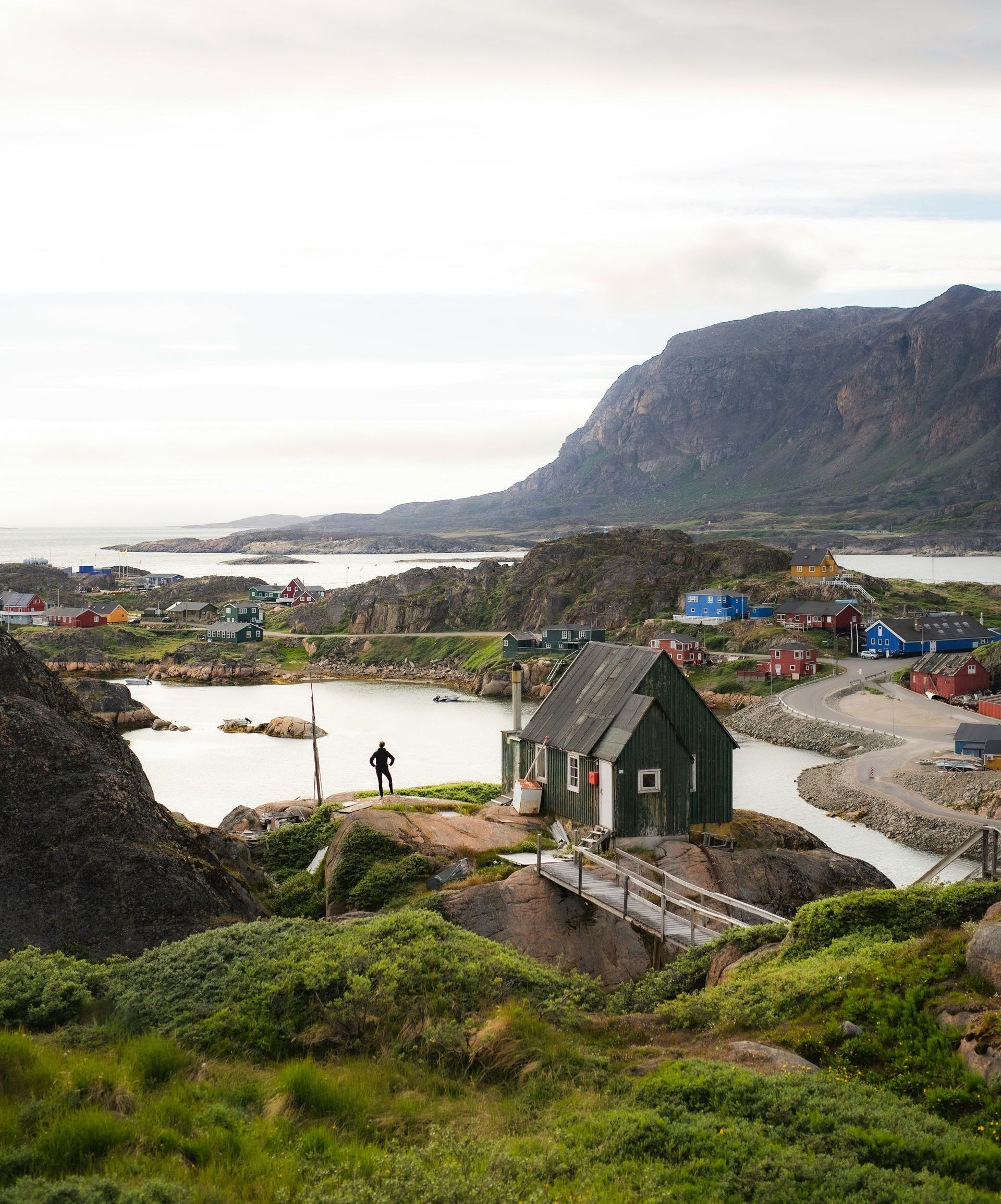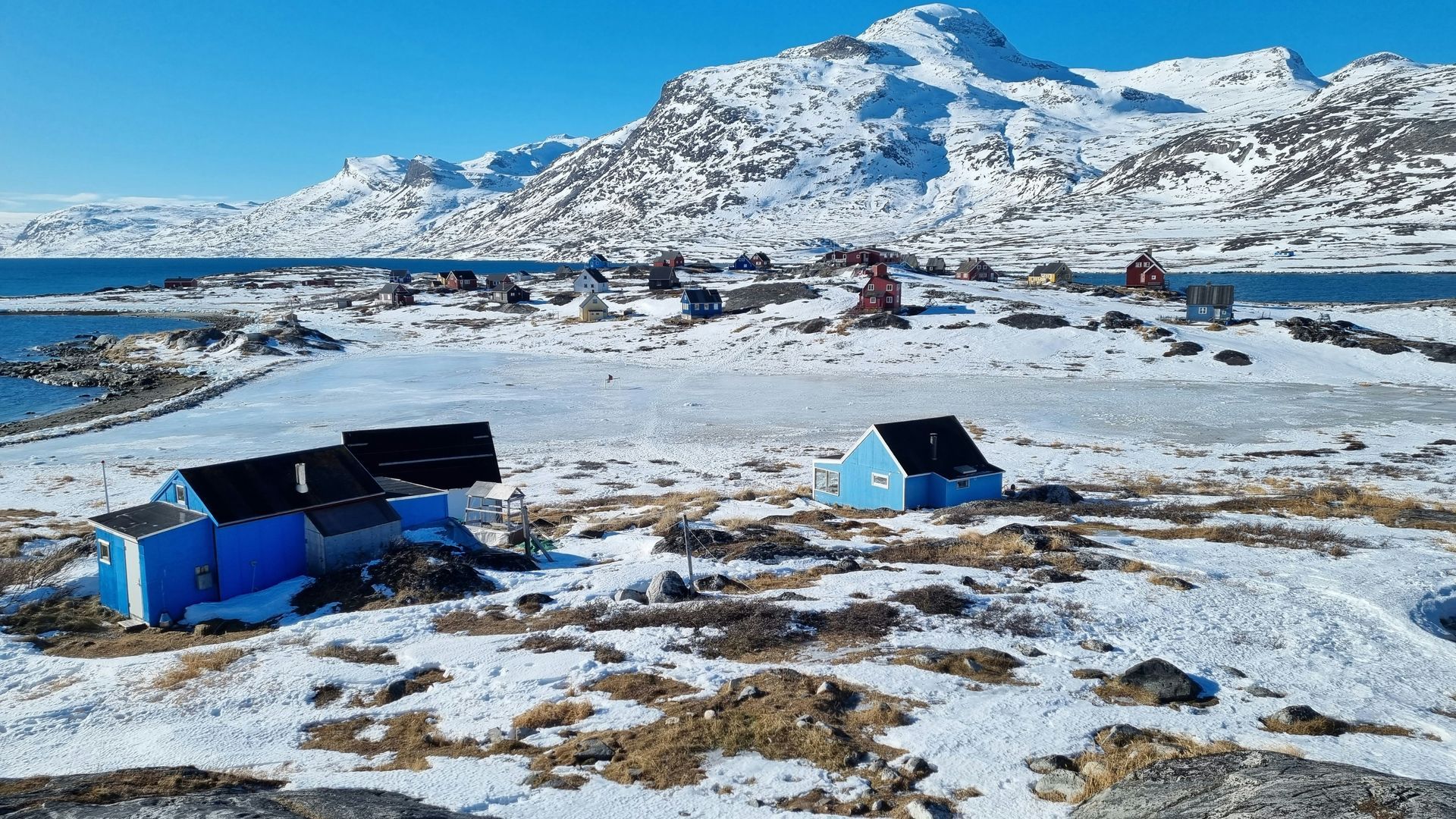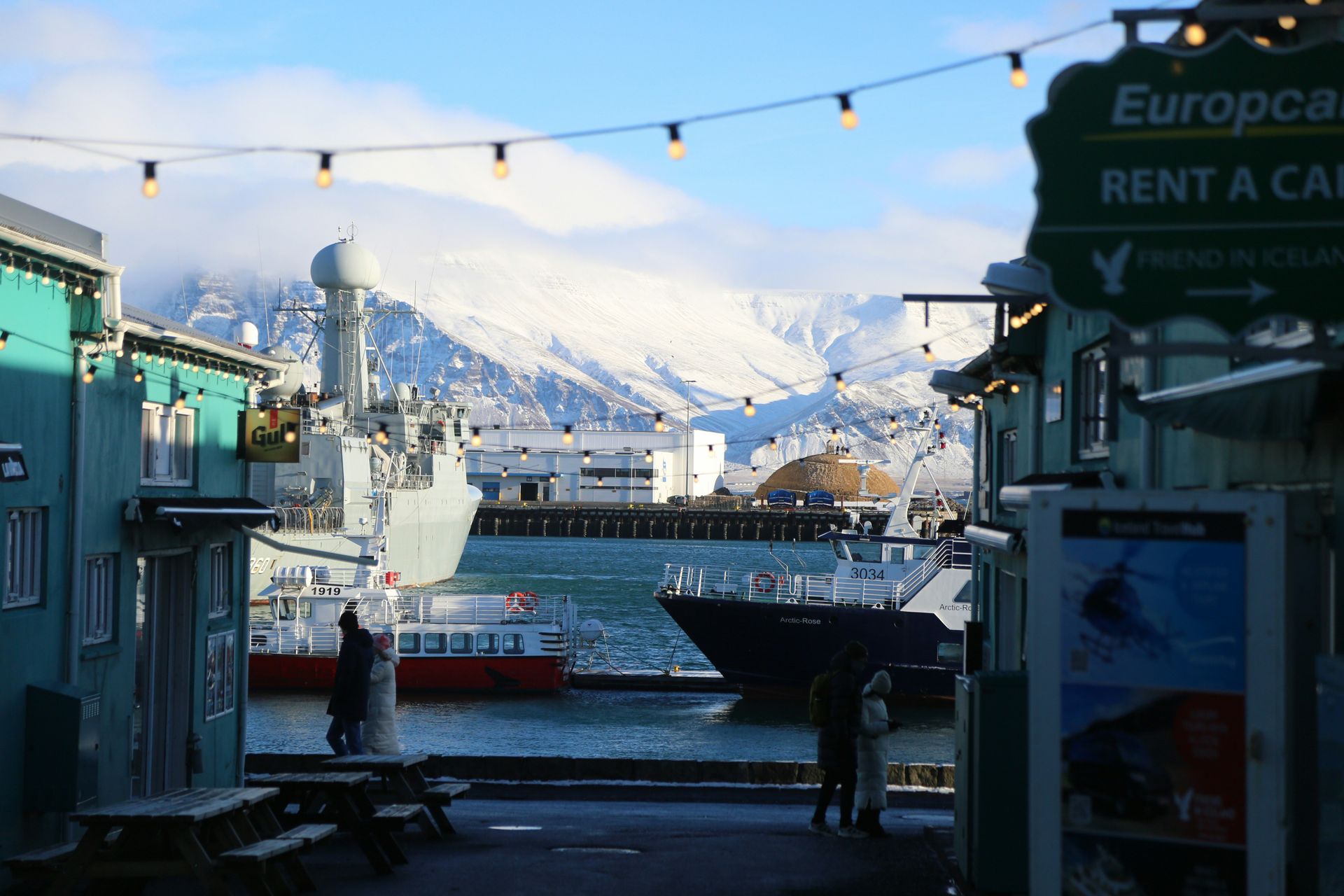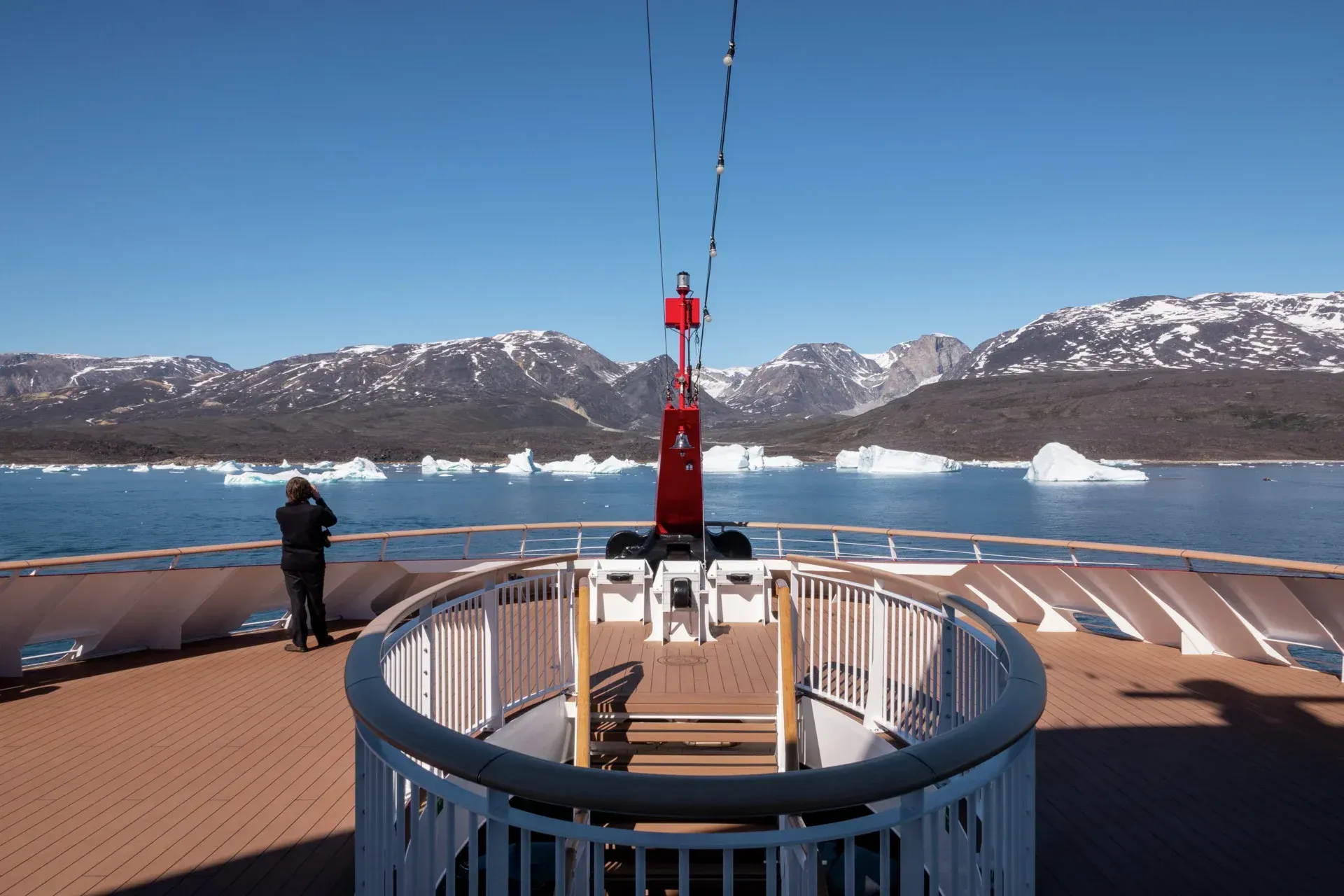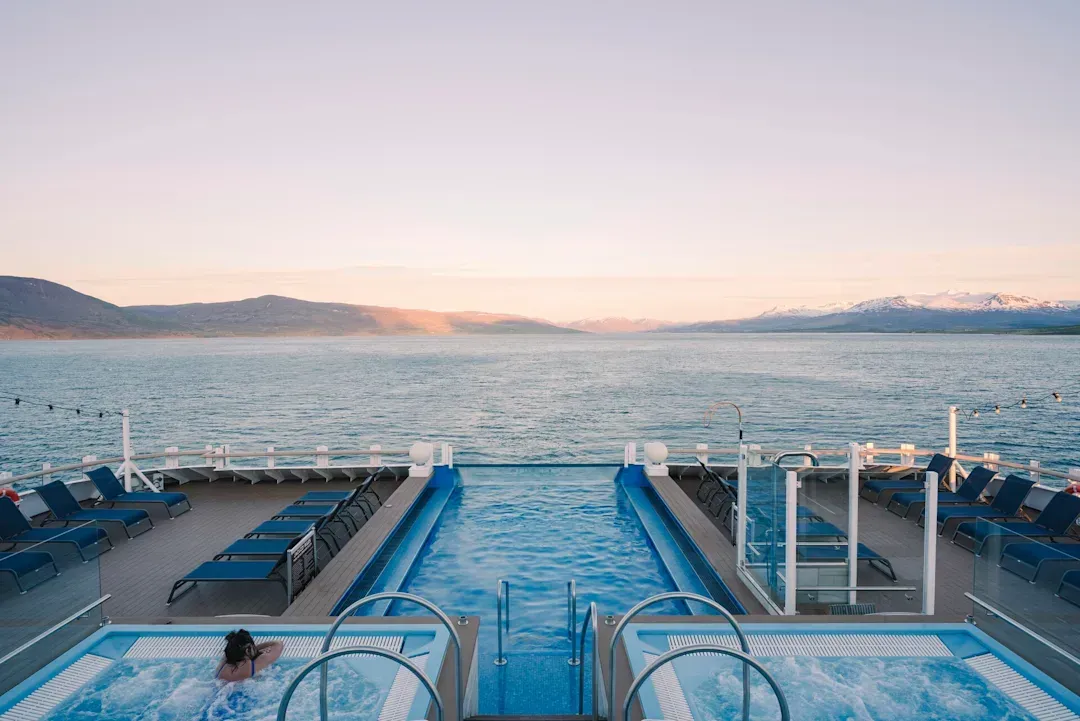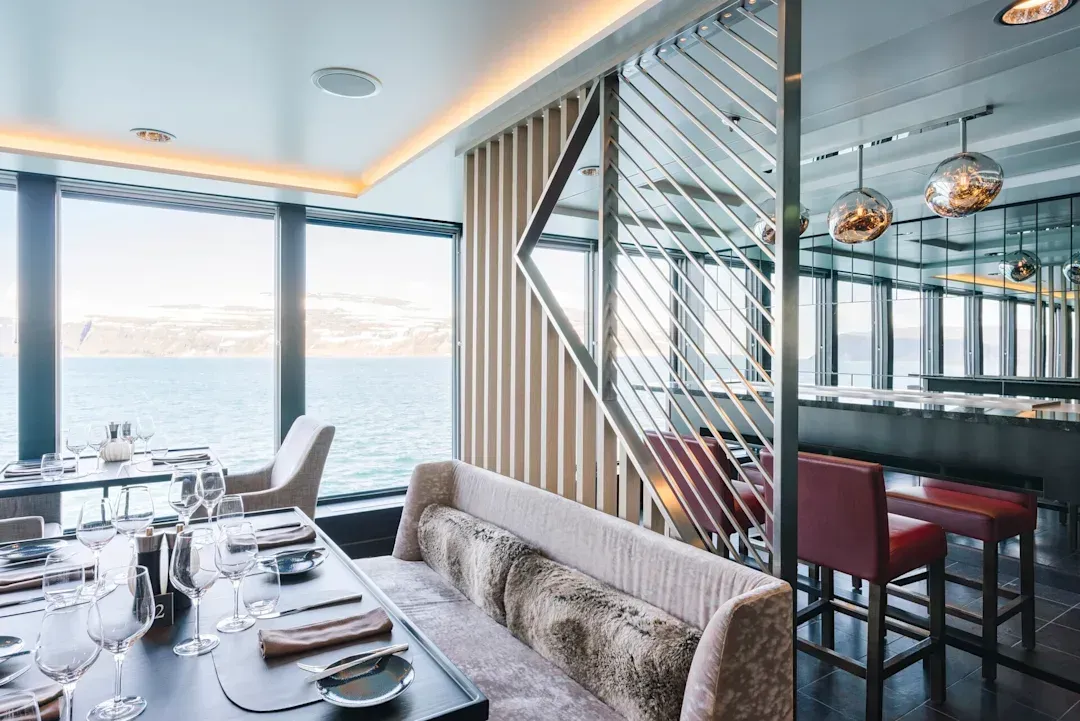Grand Greenland
Mythical Lands of the North
16 Days
Reykjavík to Reykjavík
Expedition Cruise
Countries
Iceland
Greenland

Overview
We set out north from Nuuk along the rugged and breathtaking coast of west Greenland. See immense icebergs from tidewater glaciers in Disko Bay, including Sermeq Kujalleq, the gigantic glacier at the head of UNESCO-listed Ilulissat Icefjord. As we sail, we’ll be on the lookout for whales. Isolated even by Arctic standards, the inhabitants of the far north – known in legend by the name Thule – have for centuries been the northernmost communities on the planet. Expect High Arctic conditions, cold-adapted wildlife, ice-choked waters, and the coolest summer on Earth. HX is a proud member of the Association of Arctic Expedition Cruise Operators (AECO). To protect the sensitive environments we explore, we carefully follow AECO standards on available landing sites and safe distances from wildlife, while still giving you an unforgettable expedition experience.
Itinerary
All-Inclusive Benefits
All planned activities are subject to weather and ice conditions; excursions and activities are subject to change.
Expedition Cruise
- A stay in a cabin of your choice
- Daily breakfast, lunch, and dinner
- Wine, beer, and spirits available at meals and throughout the day and evening (subject to licensing laws, excludes premium drinks)
- All day coffee, tea, and soft drinks
- Fine dining in the restaurant Lindstrøm is included for suite guests
- A complimentary Ocean Bottle water bottle to refill on board and take home
- Wind and waterproof expedition jacket
- Professional photos from your trip taken by our onboard photographer
- Complimentary Wi-Fi. Please note, streaming is not supported
- Use of sauna, hot tubs, pool, fitness room, lounges, and more
- Gratuities included. Fantastic service is standard at HX – though if you’d like to leave something extra, it’s always appreciated
- Range of included activities
On Board Activities
- In-depth lectures and discussions hosted by our knowledgeable Expedition Team
- Use of our Science Centre, including the library and advanced biological and geological equipment
- The Citizen Science Program allows guests to assist with ongoing scientific research
- An onboard professional photographer will give tips and tricks for taking the best landscape and wildlife photos
- Informal gatherings with the crew for daily briefings
- Daily briefing with the Expedition Team about the plans for the next day
Landing Activities
- Escorted landings with small expedition boats
- Loan of boots, trekking poles, and all equipment for activities. Your HX travel documents will have a recommended packing list.
- Expedition photographers on hand to assist you
MS Fridtjof Nansen
The newest addition to our fleet will honor the heritage of her namesake – the Norwegian explorer, scientist, humanitarian, and Nobel Peace Prize laureate Fridtjof Nansen. Known for his innovations in Arctic expeditions, Nansen led the first crossing of Greenland on cross-country skis. He is perhaps most famous for his attempt to reach the geographical North Pole during the Fram Expedition (1893-1896). Interestingly, after Nansen's Fram expedition, the ship was passed on to another great explorer who secretly planned an expedition to the South Pole - Roald Amundsen.
Love this cruise?
Have Viking Travel book your next getaway!


